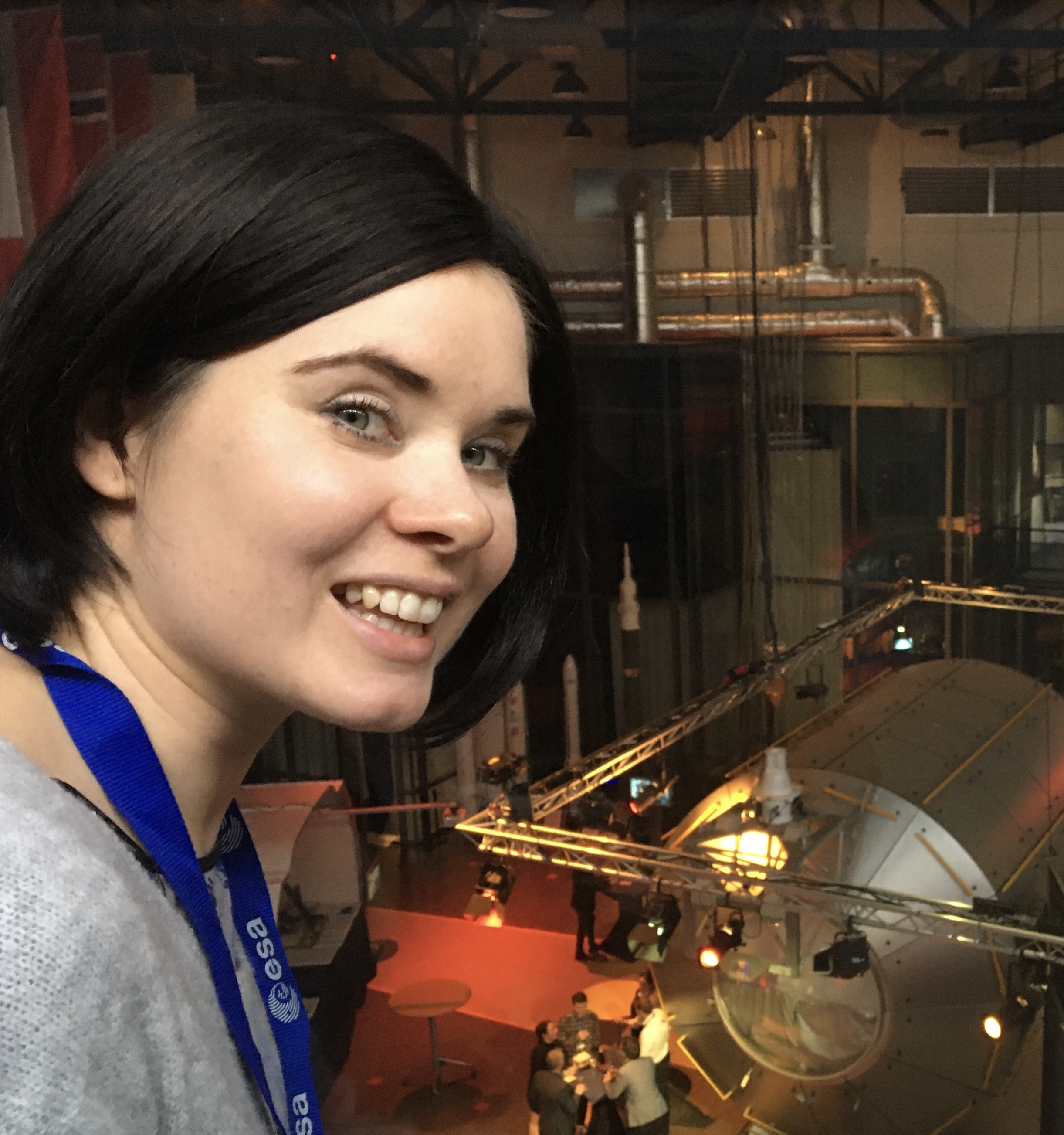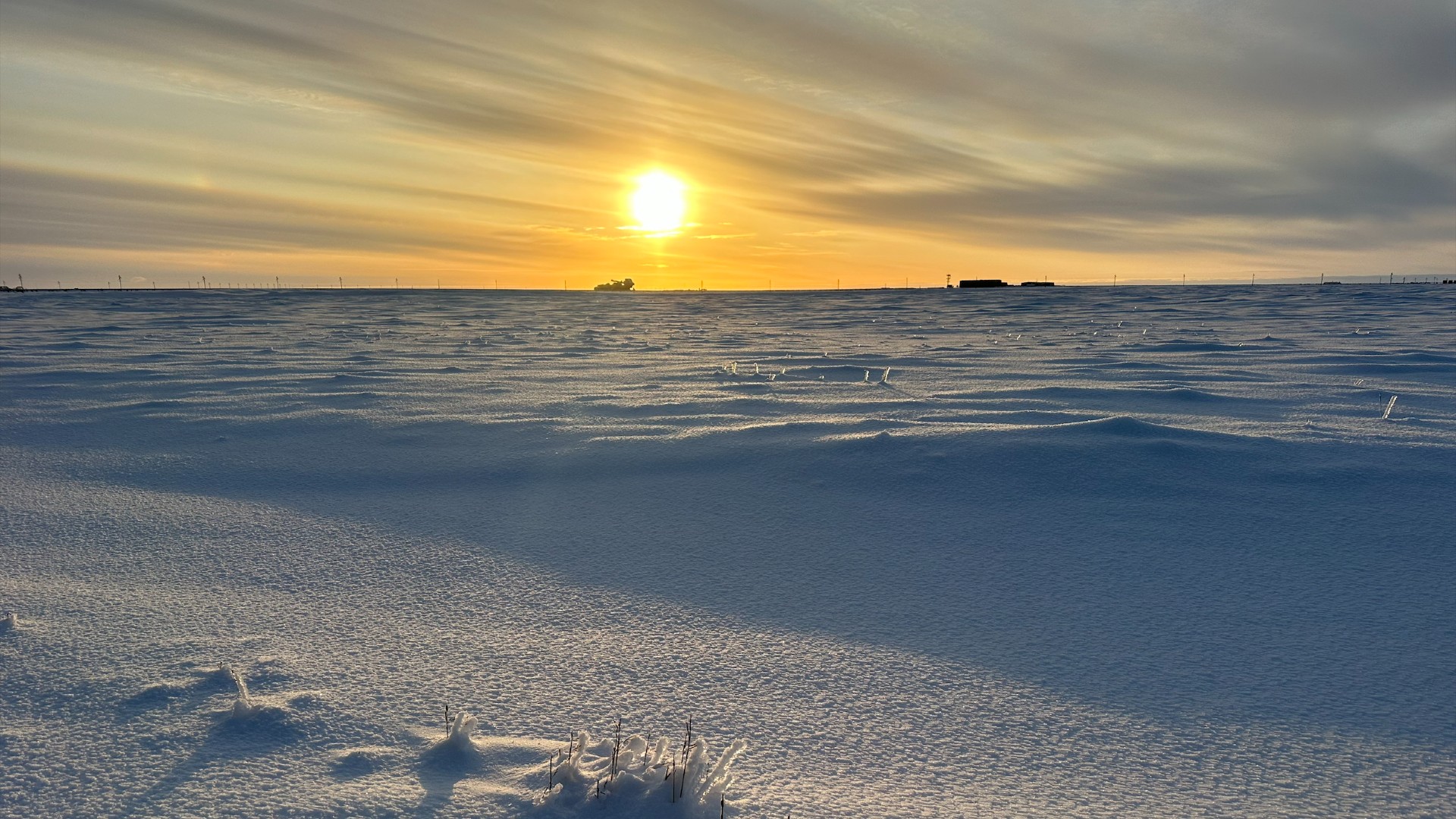Astronauts see only total solar eclipse of 2021 from space station (photos)
Only a few thousand humans (and a lot of penguins) could enjoy this year's only total solar eclipse.

Astronauts at the International Space Station got a glimpse of the only total solar eclipse of 2021, which was otherwise only visible to a few lucky observers in Antarctica.
The eclipse, which began on Saturday (Dec. 4) at 2 a.m. EST (0700 GMT), saw the seven spacefarers who currently inhabit the International Space Station squeeze into the Cupola, the panoramic dome attached to the station's Tranquility node, to enjoy the mesmerizing spectacle, according to NASA astronaut Kayla Barron.
"Saturday morning, the Expedition 66 crew squeezed into the Cupola to check out the total solar eclipse that occurred over Antarctica and the Southern Ocean," Barron said in a tweet, sharing two snapshots of the display as seen by the space station crew. "Here the moon casts an oblong shadow on the Earth's surface. It was an incredible sight to behold."
Related: Totality! Solar eclipse reaches peak over Antarctica (video)
The eclipse peaked at around 2:44 a.m. EST (0744 GMT) with two minutes of totality, during which the entire solar disk was shielded by the moon. A tiny sliver of the sun re-appeared soon after, gradually squeezing out the shadow of the moon. At 3:06 a.m. (0806 GMT), the solar eclipse was over.
Apart from the astronauts and cosmonauts at the orbital outpost, a few thousand researchers who currently work at science bases in Antarctica were able to enjoy the rare phenomenon. With them, several hundred thousands of emperor penguins were likely staring at the suddenly darkened sky in awe.
Wealthy stargazers could squeeze onto one of the eclipse-watching flights that departed from Santiago, Chile, and Melbourne, Australia, asking $6,000 to $9,000 per seat.
Breaking space news, the latest updates on rocket launches, skywatching events and more!
"Saturday morning, the Expedition 66 crew squeezed into the Cupola to check out the total solar eclipse that occurred over Antarctica and the Southern Ocean. Here the moon casts an oblong shadow on the Earth’s surface. It was an incredible sight to behold." – Kayla Barron pic.twitter.com/FktW8qsBIUDecember 4, 2021
The partial eclipse was visible from parts of Australia, New Zealand, Argentina and South Africa. Partial solar eclipses, however, are far less spectacular, as the glow of the sun outshines the shaded parts and it is dangerous to look at the partially covered solar disk without special eclipse-watching glasses or simple projectors.
The next total solar eclipse will take place on April 20, 2023, this time treating a much larger chunk of the world's population, as it will be visible from large portions of southern and eastern Asia.
Follow Tereza Pultarova on Twitter @TerezaPultarova. Follow us on Twitter @Spacedotcom and on Facebook.

Tereza is a London-based science and technology journalist, aspiring fiction writer and amateur gymnast. She worked as a reporter at the Engineering and Technology magazine, freelanced for a range of publications including Live Science, Space.com, Professional Engineering, Via Satellite and Space News and served as a maternity cover science editor at the European Space Agency.
